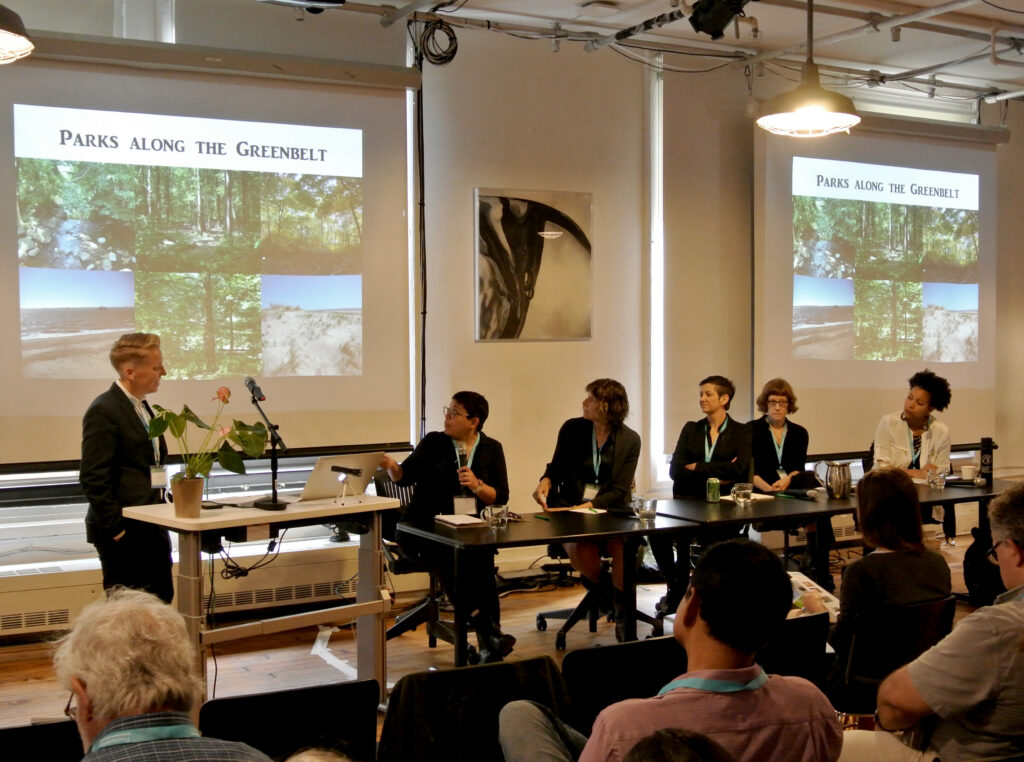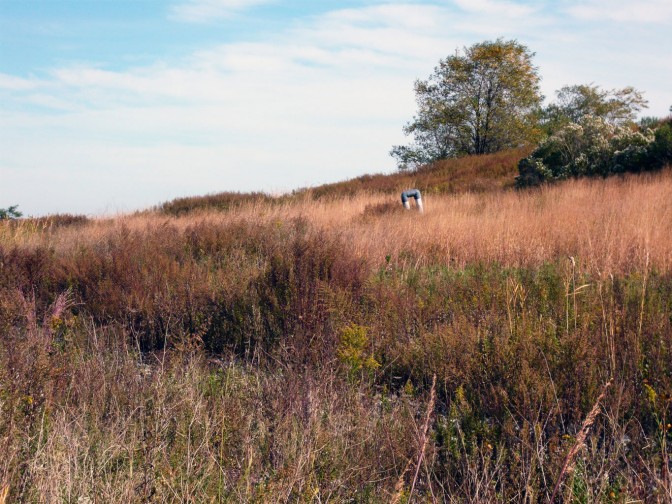Imagining the future – Freshkills Park in 2041

The View from North Mound
The Fresh Kills landfill closed 20 years ago and in marking the anniversary, we decided to imagine a fast forward to 20 years in the future, 2041, when all 2,200 acres of the park are open to the public. What follows is an aspirational imagining:
The 2020 pandemic highlighted the critical need for parks and open space and the need for more equitable access to open space all across NYC. This recognition led to major funding by NYC, state and federal agencies in NYC parks and transportation systems and spurred the largest investment in parks in over 100 years. With an abundance of waterfront access, a thriving ecology and 2,200 acres, Freshkills Park was fortunate to receive the funding it needed to open the entire park and make it accessible to all visitors.

Discovery Day
In 2041, visitors enjoy the natural grasslands, meadows and woodlands that have continued to thrive on all four mounds. New visitors to the Park typically head to the viewing platform on top of North Park for its iconic view of lower Manhattan and the 360 view of the park. North Park is a popular destination for cyclists and walkers who can climb to the top of the bird tower and the wetland observation deck overlooking the William T. Davis Wildlife Refuge. The kayak concession on Main Creek is another popular destination and provides kayakers easy access to Main and Richmond Creeks any time of day. And the former industrial area at Plant 2 has been transformed to a bustling landscaped concession area with kayak, canoe and bicycle rentals and on the weekends, a veritable feast of food trucks featuring international cuisines, pizza and espresso.

Kayak along Main Creek
It is now easy to get to Freshkills Park- a new road has been built that connects 440 and Richmond Avenue, and it takes visitors directly to the heart of Freshkills Park at the confluence of the creeks. Staten Island has a robust ferry system in place and there is a Freshkills Park stop at both Plant 1 and Plant 2 for ferries from Manhattan and Brooklyn. Staten Island finished a long awaited light rail system that includes a stop for Freshkills Park visitors. “The Freshkills Line”, a dedicated bike and pedestrian way has been built to connect St. George and North Shore neighborhoods to the Park and locations south. In addition, NYC invested in a more comprehensive bus system with dedicated lanes that speed the trip between St. George and the Park. There is plenty of parking inside the Park, and visitors who want a leisurely tour can take an electric people mover that circulates around the park. There are also numerous bike stations with easy pick-ups and drop offs and helmets.
Freshkills Park is also a destination for NYC soccer teams; the NYC Junior World Cup Soccer Tournaments are played at the Owl Hollow and South Park fields every year. The amenities at the fields and their natural settings make them popular with parents who can enjoy forested walks during the games. South and East Park are also popular birding destinations. Through innovative management techniques, the East Park grasslands are thriving as are the bird populations they support. Audubon and Freshkills Park have partnered and created Audubon Freshkills – a group dedicated to preserving and studying the birds and sharing the information with novice and professional birders alike.

Audubon Bird Tour
While the mounds have remained natural, commercial development along the waterfront attracts many visitors who generate the revenue necessary to help maintain this incredible Park. Much of the former industrialized Plant 1 was torn down but Parks preserved and repurposed a beautiful 1940s brick building into a market, food court and restaurant area that offers everything from fine dining to a slice from the venerable Denino’s pizzeria and tavern. The adjacent marina is home to sailboats and motorboats that enjoy easy access on the Arthur Kill to New York Harbor and Raritan Bay. Boats heading to the Raritan Bay get a close up view of the boat graveyard, a presence even in 2041. A public concert venue is also open at Plant 1 and attracts visitors from New York and New Jersey to hear Staten Island natives CJ, Ingrid Michaelson and the Wu-Tang Clan as well as new hip-hop, blues and R+B artists. The concert venue is well-known for its indoor-outdoor design, sound stage and acoustics. It is also a venue for theatrical pre- and post- Broadway runs and Saturday Night Live, in honor of Pete Davidson and Colin Jost, hosts an annual show on the concert stage.
Environmental education and research continue to be an important part of programming and are supported by the new Environmental Education and Research Center located at the base of South Mound. The state of the art, LEED certified building was completed in 2030 and houses a small museum, laboratory space for on-site researchers, classroom and office space and a conference room. The Research Center continues long term partnerships with CSI and Rutgers, supports on site research projects, welcomes researchers from around the world and contributes to major publications on grasslands and grassland birds. Research done at the site also allows the team to continue refining an innovative curriculum that is used across the Northeast.

Reclaimed Lands Conference
Artists come from all over to do research on the site and create pieces that celebrate the Park’s history and its future. Artists draw inspiration from the landscape and the various disciplines that have moved the transformation forward as well as from its stories that reach back to the Leni Lenape and Dutch settlers. We are fortunate to have a gallery on Richmond Avenue, in a building that was expanded in 2026, with rotating exhibits by photographers, painters, digital artists and videographers to name a few. Larger scale installations can be found in various locations at the Park, including one by Mierle Ukeles on South Mound and “Fresh Kills Infrastructure 2.0,” located at Plant 2. The artist recycled parts of a flare station and a digger and placed them on a landscaped mound to celebrate the history of the site and its transformation. And, after a community visioning process, an artist was selected to design a monument to commemorate the events of September 11, 2001 and those who participated in the recovery efforts. In 2031, on the anniversary of closure, construction was completed.

Fastnet workshop
We enjoyed this opportunity to share a vision for the Park; looking to the past and looking to the future are both essential to building large scale infrastructure that serves and has meaning for the public. We eagerly await the chance to welcome students, professors, urban adventurers, photographers, scientists, sculptors, writers, landscape architects, urban ecologists, families, recreational enthusiasts and park lovers to the Park. As the build out moves forward, we will host as many events as possible so everyone can see what this magnificent place is and will be. Please see our website for the full range of programs we offer as the park gradually welcomes people back this spring.

North Mound Tour




